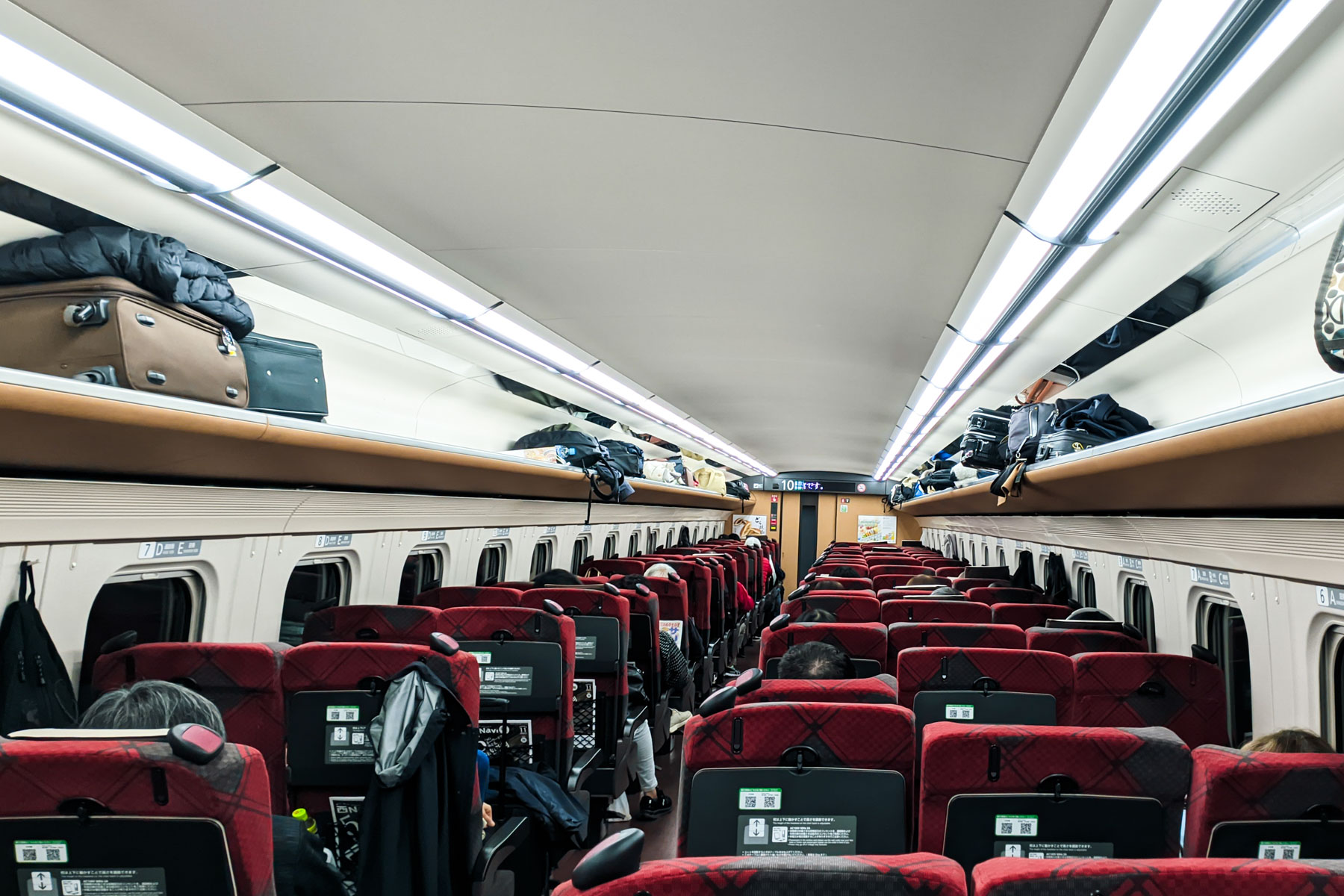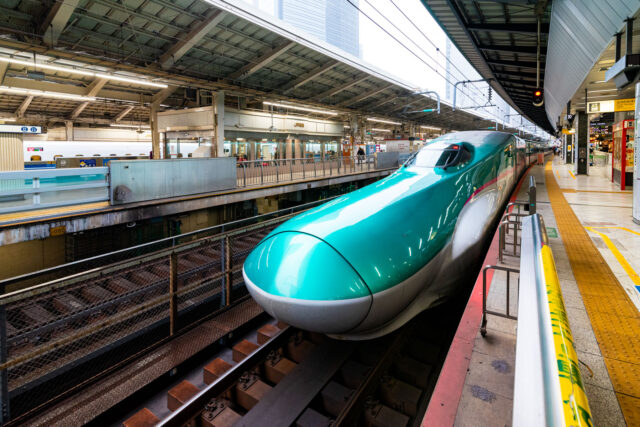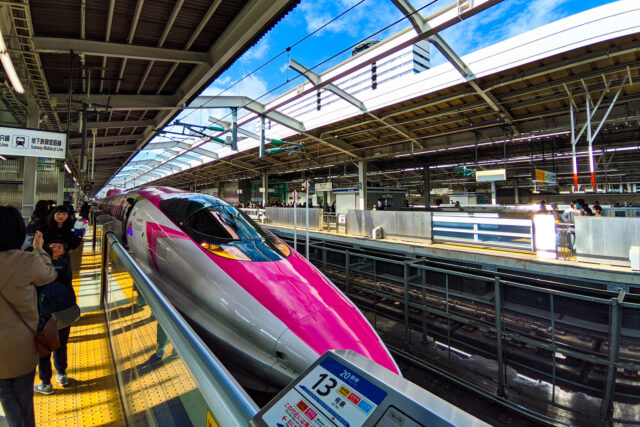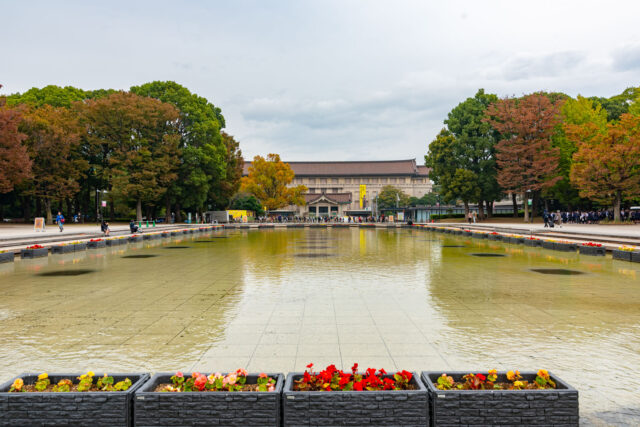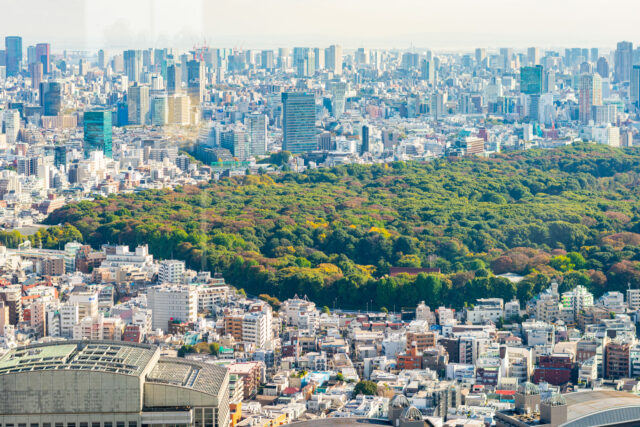Quick heads‑up, fellow travelers: Hit the Road Ket contains some affiliate links. Book through them and I earn a small commission at no extra cost to you – fueling my caffeine fix and future travels! For more details, see my Disclosures.
Quick answer to the question: Not for most travellers, especially for the most popular and standard itineraries. But it depends on your travel route, so make sure to calculate.
The option of using Japan Rail Pass has been exciting for tourists for a long time. However, with the price increase in 2023, many travellers may not find it good value-for-money. Still, some travellers, who love whirlwind itineraries, may find it useful. Others may be better off purchasing regional JR Passes.
Therefore, based on our experiences, I would like to provide you with a thorough guide to help you figure out, if it is worth it for you.
Things to Know to Decide if Japan Rail Pass is Worth it
Who Can Use Japan Rail Pass: Temporary Visitor Stamp
Only tourists can use the JR Pass. Locals or anyone with a different visa, other than “Temporary Visitor” are not eligible. So make sure that your stamp upon entering Japan says “temporary visitor”. This will be checked, when you pick up your physical pass in Japan.
Japan Rail Pass: Types and Prices
| Pass Type (consecutive days) | Ordinary Car Price | Green Car Price (First Class) |
| 7 Day Pass | 50000 yen | 70000 yen |
| 14 Day Pass | 80000 yen | 110000 yen |
| 21 Day Pass | 100000 yen | 140000 yen |
How to Calculate if Japan Rail Pass Will Save you Money
To understand whether the Pass is worth it for you, you should first consult one of the many available JR price calculators. I personally find the versions from Japan Guide and Navitime (the first two on the list) to be the most user-friendly.
Any of these calculators will let you input every leg of your itinerary and see, if the Pass is worth it. For example, if your itinerary includes the following trips Tokyo -> Osaka -> Kyoto -> Tokyo, you will input each leg of your journey separately, Tokyo -> Osaka, Osaka -> Kyoto, Kyoto -> Tokyo. Based on this information, the calculator will compare the JR Pass Price (7-, 14- and 21-day ones) with the price of buying these tickets separately. As a result, any of this calculators will tell you, if the pass is worth for this itinerary. For instance, Japan Guide one will show the comparison of prices with and without a pass and directly tell you whether it “pays off” or “doesn’t pay off”.
Some might say that the Pass is useful inside cities as well. Yes, it may get you to use Yamanote line in Tokyo and the JR Loop line in Osaka, as well as some buses, but honestly the added value of those rides is very little and would hardly ever change the calculation, therefore I suggest not to bother with them, unless your calculations show that JR Pass is only slightly more expensive.
JR Pass Benefits: Why Some Travelers Still Choose It
Flexibility and Convenience
The first and foremost perk of the pass is its convenience. You don’t need to have any seat reservations for trains at particular times, you can simply hop on any eligible train’s non-reserved car any time. This is certainly very handy, especially while doing day trips and you have no idea how much time you will need at a particular town until you get back to your hotel.
Also even if you have a reserved seat and you miss your train, you can take another one in a non-reserved car. Of course, if this happens, you may attempt to cancel your reservation, but you may not always be able to do this.
To be honest, we loved this convenience:
- We did not have to rush to make it to a particular train and were able to just hop on almost any train.
- We took day trips, which would otherwise cost a fortune.
- We could take faster trains even on shorter routes that saved us time. Otherwise, we wouldn’t take these, as it would be too huge a price difference with slow trains.
- We took the sightseeing trains that were included in the price – trust me, I was very happy to be able to take them guilt free. I do love sightseeing trains. I even dedicated 3 articles to them, if you want to check out.
That said Regional Rail Passes also provide the same convenience, as long as you cover smaller areas. I will elaborate more in my article dedicated to Regional Train Passes.
One time, we had seat reservations for the Otsuki-Tokyo route. However, coming back from Kawaguchiko lake area to the Kawaguchiko train station turned out to be much more complicated than we thought, we simply were unable to catch a bus – they all came crowded. That lost us an hour, then the bus was extremely slow and took three times more than should have. We missed the train to Otsuki, so as a result we missed our reserved train from Otsuki. We would have liked to cancel but couldn’t do anything, as we had to catch the next train. We got on the non-reserved car. While it was crowded and we had to stand a part of the way, at least we got to Tokyo. Long story, but If we had had a normal ticket and missed that train, we would have had to buy a new one.
Seat Reservations included
While hopping on non-reserved cars is easy (outside the busiest seasons), if you are travelling during the very busy period, with luggage, on long distances, or absolutely need to be on a train at a specific time, you better make seat reservations. Without the JR Pass, the reservations cost additional money and sometimes can be quite expensive. JR Pass allows you to reserve any seats, even those with the reserved oversized luggage behind. Obviously seats aren’t free, but they are included in the Pass.
You can find detailed guide on how to reserve seats with the JR Pass in my guide on using the Pass.
Extensive Coverage
This Pass has an extensive coverage all across the country. But of course, it only covers JR lines with very few exceptions. With a single pass, you can access an incredibly wide range of transport options – from long-distance bullet trains to sightseeing trips and even ferries. You can find the full list of all transportation that the JR Pass covers on the official website, but here is the easier breakdown:
Shinkansen Trains with the exception of Nozomi and Mizuho
- You can ride all JR-operated Shinkansen lines, including the popular Hikari, Sakura, and Kodama trains. The only exceptions are Nozomi and Mizuho, the fastest trains on the Tokaido and Sanyo lines. Don’t fret though, the difference in speed with other numerous options is minimal. Just double-check train names before boarding to avoid fines.
Sightseeing Trains (My absolute favourite perk of the JR Pass)
- JR Pass covers many unique sightseeing trains, including: Hanayome Noren (between Kanazawa and Wakura Onsen), Aso Boy! (between Kumamoto and Aso), Two Stars 4047 (between Takeo Onsen and Nagasaki), Hida Wide View (between Toyama and Nagoya), Hello Kitty Shinkansen and many more.
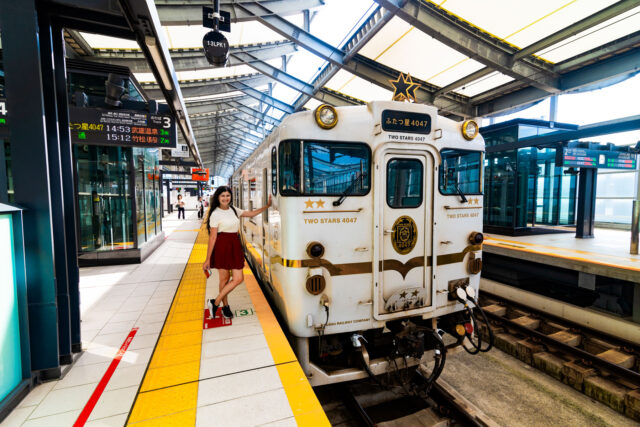
Regional and City JR Lines
- The pass also works on many slower regional trains, as well as some city lines, such as Yamanote Line in Tokyo and the Osaka Loop Line.
JR Buses and Ferries
- The JR Pass also includes a few extras beyond trains. You can hop on some local JR buses, like the JR line in Kanazawa, and even take the JR Miyajima Ferry. These are nice bonuses, but they’re more occasional perks than something you’ll find frequently.
Most train and metro stations, as well as sightseeing trains have their own stamps available. I love collecting them. I carried my notebook to collect all stamps together – it was a lot of fun. But normal notebooks with lines didn’t work and the stamp books I found were plain, so we decided to create our very own ultra‑cute stamp book. We hand‑picked over 100 photos – from Tokyo’s neon streets to Shirakawago’s mountain charm, Mount Fuji’s majesty to hidden shrine details. The transparent layout keeps your stamps and notes crisp and visible, while letting the scenes beneath shine through.
Sample Itineraries: When the JR Pass is Cost-efficient and When Not
Let’s have a look at a few possible itineraries to understand, which one would make buying the JR Pass a good deal and which one would make individual tickets cheaper.
Sample itinerary 1: Golden triangle One-Week Itinerary
(JR Pass not worth it)
| Day 1-2 | Tokyo | |
| Day 3 | Travel Tokyo-Osaka | 14000 yen |
| Day 3-4 | Osaka | |
| Day 5 | Travel Osaka-Kyoto | 500 yen |
| Day 5-7 | Kyoto | |
| Day 8 | Travel Kyoto-Tokyo | 13000 yen |
| Day 8-9 | Tokyo | |
| 27500 yen |
In this example itinerary you absolutely will lose money, if you get the JR Pass. And a lot of money at that, as the Pass is 50000, compared to 27500 for individual tickets. Even if you include the tiny costs of train rides inside cities, it would never be more than a couple thousand yen.
In this case, I highly doubt that the pass would provide any convenience either, as you would not be taking the trains all that much.
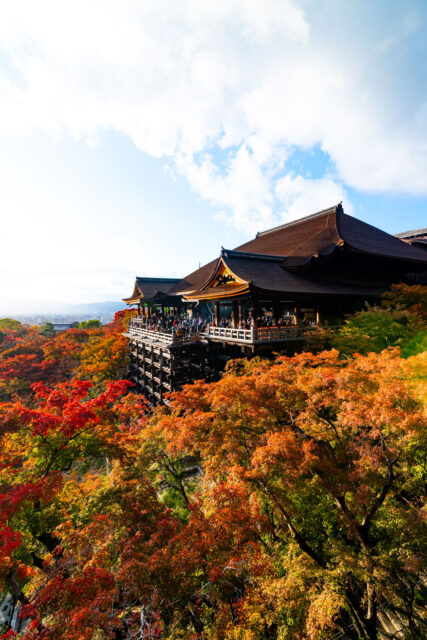
Sample itinerary 2: Two-week Itinerary
(JR Pass not worth it)
| Day 1-2 | Arrival and Tokyo | 2500 yen – Ride from Narita |
| Day 3 | Travel Tokyo-Kyoto | 14000 yen |
| Day 3-5 | Kyoto | |
| Day 6 | Travel Kyoto-Osaka | 500 yen |
| Day 6-8 | Osaka | |
| Day 9 | Day trip to Nara (round trip) from Osaka | 1000 yen |
| Day 10 | Travel Osaka -Hiroshima | 10000 yen |
| Day 11 | Hiroshima | |
| Day 12 | Day trip to Miyajima Island from Hiroshima | 1240 yen (calculator says 1000, but doesn’t matter much) |
| Day 13 | Travel Hiroshima-Tokyo | 18000 yen |
| Day 14 | Tokyo and leave | 2500 yen – Ride to Narita |
| 62740 yen |
This possible packed two-week itinerary train travel budget would add up to 62740 yen with individual tickets, while the JR Pass costs 80000 for the 14-day Pass. You wouldn’t be able to fit these into 7 day Pass – no chance. Even if you include the tiny costs of train rides inside cities, it would never be more than a couple thousand yen.
As you can clearly see, as in the case of previous itinerary you would simply lose money here.
Sample itinerary 3: Whirlwind One-Month Itinerary
(21-day JR Pass worth it for day 4-24)
| Day 1-3 | Arrival and Tokyo | 2500 yen – Ride from Narita |
| Day 4 | Travel Tokyo-Osaka | 13000 yen |
| Day 4-6 | Osaka | |
| Day 7 | Day trip to Nara (round trip) from Osaka | 1000 yen |
| Day 8 | Day trip to Himeji | 7000 yen |
| Day 9 | Travel Osaka -Hiroshima | 10000 yen |
| Day 10 | Hiroshima | |
| Day 11 | Day trip to Miyajima Island from Hiroshima | 1240 yen (calculator says 1000, but doesn’t matter much) |
| Day 12 | Hiroshima to Fukuoka | 8500 yen |
| Day 13 | Fukuoka | |
| Day 14 | Day trip to Nagasaki | 11000 yen |
| Day 15 | Day trip to Yufuin | 8000 yen |
| Day 16 | Fukuoka to Kagoshima | 10000 yen |
| Day 17 | Kagoshima | |
| Day 18 | Kagoshima to Kumamoto | 6500 yen |
| Day 19 | Kumamoto | |
| Day 20 | Kumamoto to Kyoto | 19500 yen |
| Day 21-23 | Kyoto | |
| Day 24 | Travel Kyoto to Tokyo | 14000 |
| Day 25-28 | Tokyo and leave | 2500 yen – Ride to Narita |
| 134000 yen
(129000 for 21 days – day 4 to day 24) |
As the 21-day JR Pass costs 100000 yen, the train travel budget of day 4 to day 24 of this insane itinerary would be 128000 yen, so if you cut out even one or two legs, the pass may still be worth it. Of course, this itinerary is pretty packed and exhausting, so you would have to decide if you do want to do this and hence, if the pass is worth it for you. In this case, it will definitely pay off.

National JR Pass vs. Regional JR Passes: Which One to Choose?
That’s a very important question and my default answer is – you will most probably be better off with regional JR Passes, if you need a pass at all.
If your itinerary is extensive, you may consider a combination of two of these Passes or another pass on top of one of these. You will definitely end up saving money.
- Sanyo-San’in Norther Kyushu Pass – 7-day pass 27,000 yen
- Hokuriku Arch Pass – 7-day pass, 30,000 yen
- JR East -South Hokkaido Pass – 6-day pass, 35,000 yen
On our second trip, I booked us the Sanyo Sanyn Northern Kyushu JR Passes to cover 7 out of 10 days of our trip, and it was absolutely worth it. It was very cost efficient and allowed us flexibility, while also covering quite a lot of territory.
If you can’t decide, whether you need a Regional JR Pass or not, check out my detailed guide.
When Should you Buy JR Pass?
Consider buying it in case, if you:
- have a fast-paced itinerary travelling through Japan and visiting multiple cities,
- will use Shinkansen frequently doing a lot of day trips,
- want the flexibility to hop on/off without strict plans,
- plan to ride at least several sightseeing trains (included in pass).
To Sum it all up, Japan Rail Pass is not worth for most travellers, however, it may be cost-efficient for some whirlwind itineraries. Other than that, I recommend to either buy individual tickets or go for a Regional JR Pass, depending on your travel route.
Already decided to get the JR Pass? Read my step-by-step guide on how to buy and use it.

Hello I am Ket,
A traveler, planner, and sweet tooth behind Hit the Road Ket.
Travel isn’t just my passion – it’s a lifeline for my mental health. Having lived in three cities and explored 60 countries (and counting!), I created this blog to share my experiences, smart tips, and itinerary advice with fellow travel lovers. I’m all about making the most of limited time, finding scenic routes, and turning every trip into something memorable – coffee in hand, of course.
